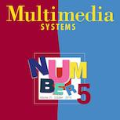In this paper, the novel simultaneously transmitting and reflecting (STAR) reconfigurable intelligent surface (RIS), which enables full-space coverage on users located on both sides of the surface, is investigated in the multi-user mobile edge computing (MEC) system. A computation rate maximization problem is formulated via the joint design of the STAR-RIS phase shifts, reflection and transmission amplitude coefficients, the receive beamforming vectors at the access point, and the users' energy partition strategies for local computing and offloading. Two operating protocols of STAR-RIS, namely energy splitting (ES) and mode switching (MS) are studied. Based on DC programming and semidefinite relaxation, an iterative algorithm is proposed for the ES protocol to solve the formulated non-convex problem. Furthermore, the proposed algorithm is extended to solve the non-convex, non-continuous MS problems with binary amplitude coefficients. Simulation results show that the resultant STAR-RIS-aided MEC system significantly improves the computation rate compared to the baseline scheme with conventional reflect-only/transmit-only RIS.
翻译:在本文中,通过多用户移动边缘计算(MEC)系统对同时传输和反映(STAR)可重新配置的智能表面(RIS)进行全方位覆盖的小说进行了调查,在多用户移动边缘计算(MEC)系统中,通过联合设计STAR-RIS阶段转移、反射和传输振幅系数、进入点的接收波束成形矢量以及用户用于本地计算和卸载的能源分配战略,提出了计算率最大化问题。研究了STAR-RIS的两个操作协议,即能源分离(ES)和模式转换(MS)。根据DC的编程和半无限的放松,为ES协议提出了一个迭代算法,以解决已拟订的非convex问题。此外,拟议的算法还扩大到解决非convex、不连续的MS问题和双振幅系数。模拟结果显示,所产生的STAR-RIS辅助的MEC系统大大改进了与基准计划的计算率,与常规反射/转发式的TRSRIS相比。





